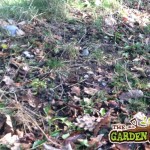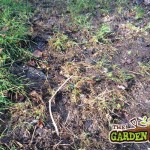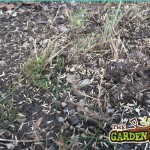Lawns can look the worst for wears after a long winter and come spring one of the first tasks on gardeners mind is to give their grass some TLC. There are a number of things that you can so throughout the year to improve & maintain a good healthy lawn and spring time is when you can really make the most impact on your lawn.
- Leaves on Lawn
- Re Seed lawn
- Re Seed grass seed
Lawn seed can be sown and a number of other jobs can be done because, while the soil is warm and conditions suitably dry- grass growth will not be excessive and hence grass wont be under much stress or demand for water. Also with a full season of growth ahead the lawn and Lawn seed will grow fast and soon recover
Often people can rush into re seeding their lawns with Lawn seed so that they have a usable lawn as soon as possible. But you would be advised to wait until the frost has passed before re seeding your lawn as a sharp frost can and will kill young, sprouting lawn seed.
Things to consider before re seeding your lawn:
Timing: April is the best month; August is the second best month. Avoid Frosty conditions and avoid wet soil conditions. Ideally re seed lawn seed in dry conditions but when rain is forecast
Why to re seed your lawn
After autumn, leaves can cover lawns and block out light as well as burn your grass as they decompose. When you rake away these leaves – which you should do as often as possible, your grass beneath may have died leaving bare patches
Other reasons for bare patches include:
- Dog waste
- Over application of fertilizer
- Oil spillage
- Poor seed establishment
- Excessive shading or drought
- After control moss has been carried out (Sluphate of Iron & scarification)
Other causes, but less likely include:
- Vine Weevils
- Scorching
- Lack of nutrients
Process in re seeding your lawn
The first thing you will need to do is to remove what is completing with your lawn to grow, this could be moss, dead leaves, compaction, split oil or other. Rake away the debris revealing the bare soil beneath.
This should be done using a rake or spring rake to avoid unnecessary damage to the grass.
Next with a spring or metal rake loosen the bare soil to create a seed bed. Finally sow the lawn seed. This is best done by hand as you can more accurately spread the seed.
After Care
Gently rake over the lawn again using a spring of leaf / lawn rake. This is to cover over the lawn seed. At this point you could also topdress the lawn with a top grass or sand, again to cover the seed.
Lightly roll the lawn to give a better contact between the lawn seed and soil and to even out the humps and bumps caused by the bare patches
If rain is forecast you can let nature takes its course. Otherwise you should water in the grass as this will really speed up germination rates.
Over the coming week ensure that the grass is kept moist at all times
Avoid feeding your lawn for a further 12 months as the fertilizer can burn the seed and young grass.
Avoid cutting your grass until the new seeds have established, it can take about 6 weeks


